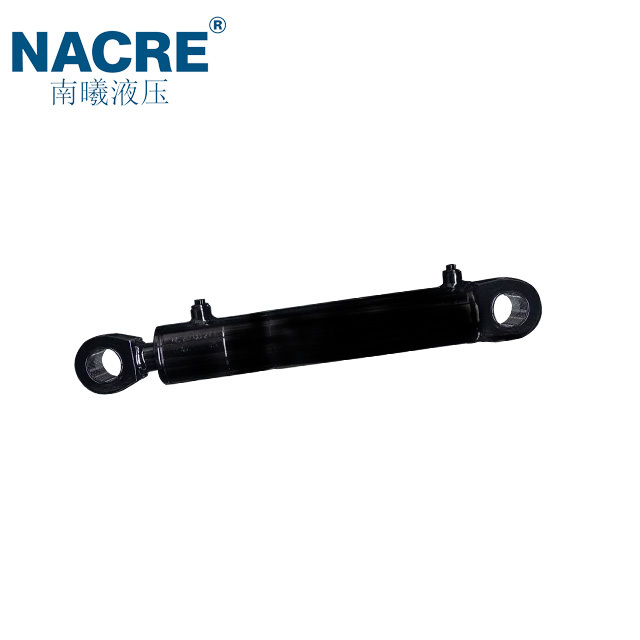Maximizing Efficiency: Essential Strategies for Maintaining Hydraulic Cylinders in Mine Equipment
2025-05-01
Maximizing Efficiency: Essential Strategies for Maintaining Hydraulic Cylinders in Mine Equipment
In the world of mining, efficiency is paramount. Hydraulic cylinders play a crucial role in the operation of various mining equipment, from excavators to haul trucks. To ensure these systems operate at peak performance, effective maintenance is essential. This article explores **best practices for maintaining hydraulic cylinders**, focusing on strategies that enhance their efficiency and longevity.
Table of Contents
- Understanding Hydraulic Cylinders: The Heart of Mining Equipment
- The Importance of Maintaining Hydraulic Cylinders
- Common Failures in Hydraulic Cylinders and Their Causes
- Implementing a Preventive Maintenance Program
- Best Practices for Hydraulic Cylinder Maintenance
- Monitoring Hydraulic Cylinder Performance
- Troubleshooting Hydraulic Cylinder Issues
- Future Trends in Hydraulic Cylinder Technology
- Conclusion
- FAQs about Hydraulic Cylinder Maintenance
Understanding Hydraulic Cylinders: The Heart of Mining Equipment
Hydraulic cylinders are devices that convert hydraulic energy into mechanical energy, playing a vital role in mining equipment. They consist of several key components, including the cylinder barrel, piston, and seal assembly. The efficient operation of hydraulic systems in mining machinery relies heavily on these cylinders, as they provide the necessary force to lift, push, or pull heavy loads.
The Anatomy of a Hydraulic Cylinder
The basic anatomy of a hydraulic cylinder includes:
- Cylinder Barrel: The main body that houses the piston and hydraulic fluid.
- Piston: A moving component that converts hydraulic pressure into mechanical motion.
- Seals: Essential for preventing hydraulic fluid leakage and maintaining pressure within the cylinder.
- Rod: The part that extends and retracts, transferring force to the machinery.
The Importance of Maintaining Hydraulic Cylinders
Effective maintenance of hydraulic cylinders is crucial for several reasons:
- Operational Efficiency: Well-maintained cylinders operate more efficiently, reducing energy consumption and minimizing operational costs.
- Equipment Longevity: Regular maintenance prolongs the life of hydraulic cylinders, thereby extending the overall lifespan of mining equipment.
- Safety: Malfunctioning hydraulic systems can pose significant safety risks to operators and equipment, making maintenance essential for workplace safety.
Cost-Effectiveness of Maintenance
Investing in regular maintenance can yield significant cost savings by reducing the need for expensive repairs and downtime. By implementing a structured maintenance program, mining companies can enhance productivity while minimizing unexpected failures.
Common Failures in Hydraulic Cylinders and Their Causes
Understanding common failures in hydraulic cylinders can aid in developing effective maintenance strategies. Some frequent issues include:
1. Seal Failures
Seal failures are among the most common problems in hydraulic cylinders. Worn or damaged seals can lead to fluid leakage, resulting in reduced pressure and performance. Causes include:
- Contamination of hydraulic fluid
- Improper installation
- Wear and tear from prolonged use
2. Cylinder Barrel Wear
Over time, the cylinder barrel can experience wear, leading to compromised performance. This is often due to:
- Inadequate lubrication
- Exposure to abrasive contaminants
3. Piston Damage
Piston damage can occur from excessive pressure or impact loading. Regular inspection can help identify signs of wear early on.
Implementing a Preventive Maintenance Program
A preventive maintenance program is essential for ensuring the reliability and efficiency of hydraulic cylinders. This program should include:
1. Regular Inspections
Conducting regular inspections helps identify potential issues before they escalate. Inspect components for signs of wear, leaks, and damage.
2. Fluid Analysis
Regularly analyzing hydraulic fluid can provide insight into the condition of the hydraulic system. Look for signs of contamination, viscosity changes, and particle count.
3. Lubrication Practices
Implementing proper lubrication practices is key to minimizing friction and wear in hydraulic systems. Ensure that all moving parts are adequately lubricated according to manufacturer specifications.
Best Practices for Hydraulic Cylinder Maintenance
To maximize the efficiency and lifespan of hydraulic cylinders, the following best practices should be followed:
1. Maintain Cleanliness
Contamination is a leading cause of hydraulic cylinder failures. Ensure that all components and fluids are kept clean during maintenance and operation.
2. Use Quality Components
Invest in high-quality seals, hydraulic fluid, and other components to ensure optimal performance and durability of hydraulic cylinders.
3. Train Personnel
Training personnel on proper operation and maintenance techniques is crucial in preventing misuse and ensuring adherence to safety protocols.
Monitoring Hydraulic Cylinder Performance
Continuous monitoring of hydraulic cylinder performance can help detect issues early. Implement the following monitoring strategies:
1. Pressure Gauges
Install pressure gauges to monitor hydraulic pressure in real-time. Sudden drops in pressure can indicate leaks or failures in the system.
2. Performance Metrics
Track performance metrics such as cycle times and output to identify trends that may indicate equipment inefficiencies.
Troubleshooting Hydraulic Cylinder Issues
When issues arise, prompt troubleshooting is necessary. Follow these steps:
1. Identify Symptoms
Pay attention to symptoms such as slow operation, unusual noises, or fluid leaks. Document these findings to assist in diagnosis.
2. Conduct Root Cause Analysis
Analyze the underlying causes of the issues based on the symptoms observed. This may involve inspecting seals, fluid levels, and component integrity.
3. Implement Solutions
Once the root cause is identified, implement corrective measures such as replacing damaged components, refilling fluids, or adjusting pressure settings.
Future Trends in Hydraulic Cylinder Technology
The future of hydraulic cylinders in mining is promising, with advancements aimed at improving efficiency and reliability. Key trends include:
1. Smart Technology Integration
Integrating smart technologies, such as IoT sensors, can enhance monitoring capabilities. These sensors collect data on performance, enabling predictive maintenance and real-time adjustments.
2. Improved Materials
Research into new materials for seals and cylinders is ongoing, focusing on enhancing durability and resistance to wear and corrosion.
Conclusion
Maintaining hydraulic cylinders in mining equipment is essential for maximizing efficiency and ensuring safe operations. By implementing effective maintenance practices, monitoring performance, and staying abreast of technological advancements, mining companies can significantly enhance the performance and longevity of their hydraulic systems. Investing in maintenance not only reduces downtime and costs but also contributes to a safer and more productive mining environment.
FAQs about Hydraulic Cylinder Maintenance
1. How often should hydraulic cylinders be inspected?
Regular inspections should be conducted at least quarterly, or more frequently based on operational conditions and usage.
2. What are the signs that a hydraulic cylinder needs maintenance?
Common signs include fluid leaks, reduced operational speed, unusual noises, or visible damage to components.
3. Can contamination of hydraulic fluid be prevented?
Yes, maintaining cleanliness during operation and using high-quality filters can significantly reduce contamination risks.
4. What role does temperature play in hydraulic cylinder performance?
Excessive temperatures can lead to fluid degradation and seal failure. Monitoring and maintaining optimal fluid temperatures is crucial.
5. Are there any new technologies for maintaining hydraulic systems?
Yes, innovations such as IoT sensors for real-time monitoring and predictive maintenance tools are emerging to improve maintenance practices.
Questions?
We are here to help.






